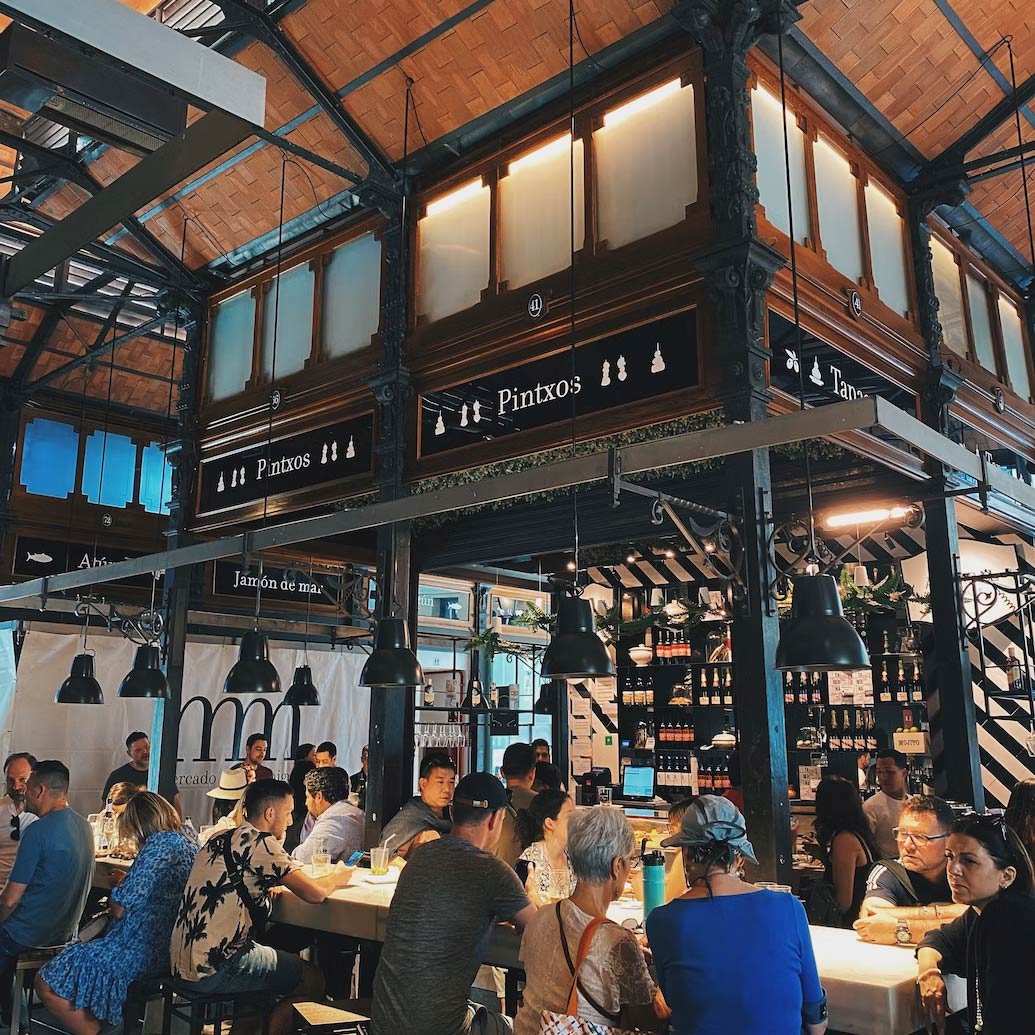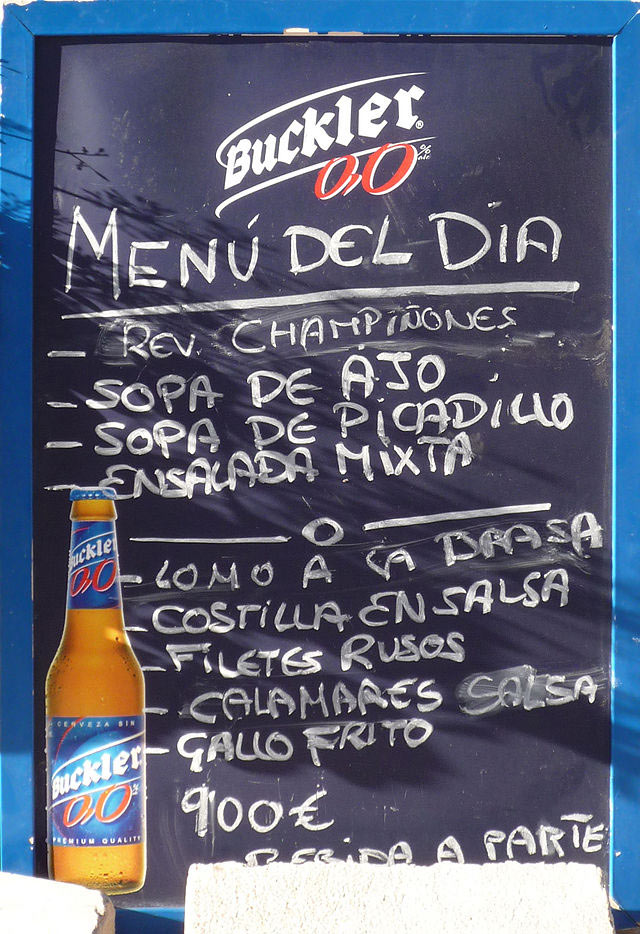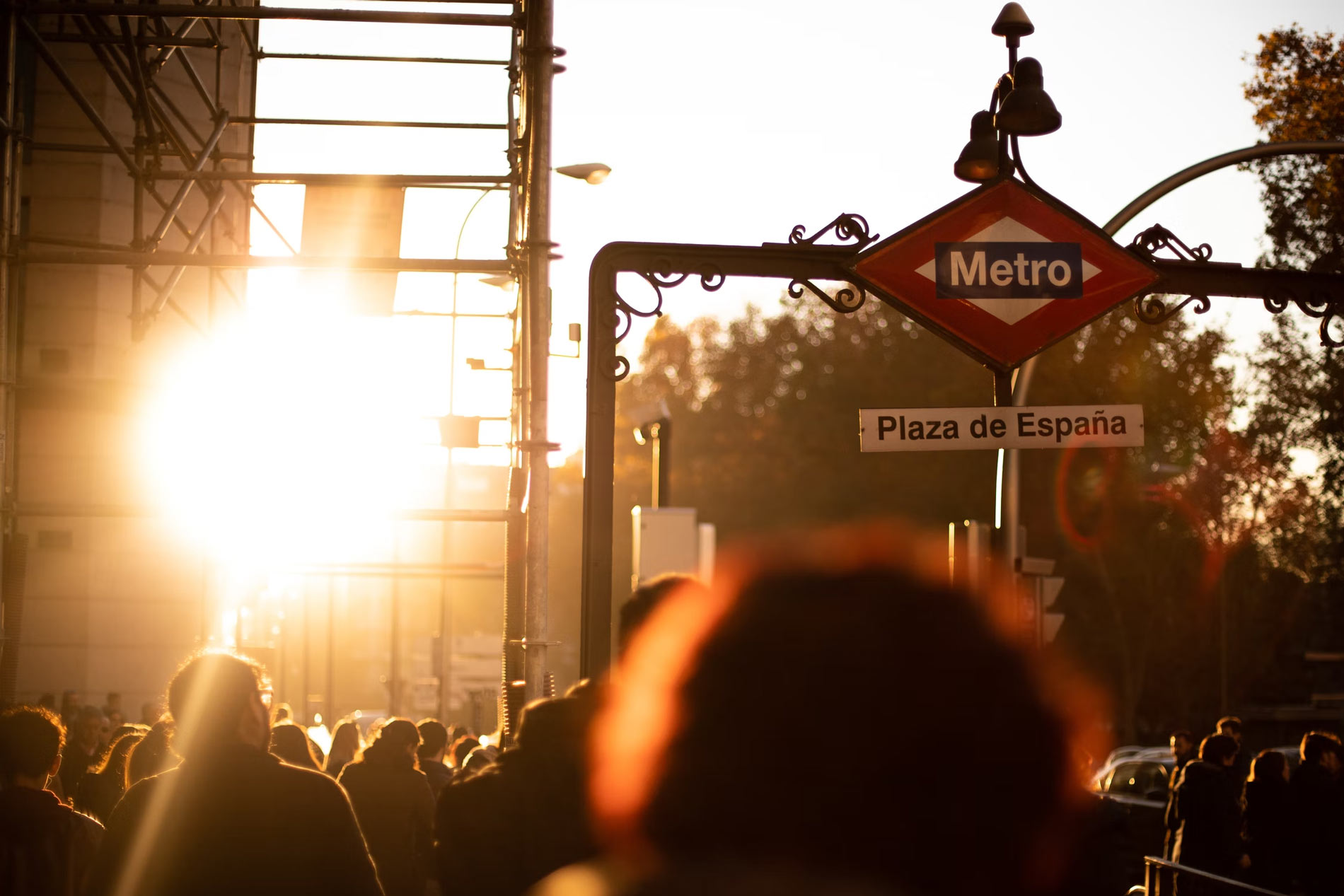Using adjectives in Spanish – A how-to guide
This is a custom heading element.
When learning Spanish, you’ll need to be able to use all the different parts of speech to fully express yourself and develop your fluency. One big area you need to be confident with is the use of adjetivos (adjectives) which describe nouns and have a few particular rules in Spanish that make them different from how we use them in English.
Before we jump into all the rules and spelling changes, let’s have a quick look at some example sentences to see if you can spot some of the main differences.
- El gato negro está en la cocina – The black cat is in the kitchen
- Necesito una mesa nueva – I need a new table
- Los coches azules son los mejores – Blue cars are the best
Can you see anything a little unusual? Hopefully you can notice that in Spanish, the adjective comes after the noun and also that it must agree with the gender of the word it describes, as well as being singular or plural. We have some other blogs which deal with the topic of genders and all the rules regarding that, so in the rest of this post we will focus on the changes you need to make to adjectives in particular.
Making adjectives agree
Once we’ve decided which adjective we want to use to describe our chosen noun, we then must look at the gender and number of the noun to ensure we use the correct adjective ending. In Spanish, adjectives often end in the letter “o” which indicates that this is the masculine singular form. Here’s a table showing you how such adjectives would change depending on whether we are using singular, plural, masculine or feminine nouns.
| Adjectives ending in “o” | English | ||||
| Singular | Plural | Singular | Plural | ||
| Masculine | El/Un perro negro | Los/Unos perros negros | Masculine | The/A black dog | The/Some black dogs |
| Feminine | La/Una silla negra | Las/Unas sillas negras | Feminine | The/A black chair | The/Some black chairs |
In the table above, you can see that for all adjectives ending in “o”, we add an “s” to make the plural and change the “o” to an “a” for the feminine form. Easy!
Apart from the “o” ending, there are also several other common adjective endings. The most important ones are adjectives which end in an “e” and those which have a final consonant. For instance,
- Verde – Green
- Marrón – Brown
- Leal – Loyal/Faithful
In these cases, there is no feminine form and the plural you simply add “s” if the adjective ends in “e”, and “es” if it ends in a consonant. This applies except when the adjective ends in “z” which then changes to “c” before you add the plural (e.g. capaz capable becomes capaces in the plural). Look at these examples,
| Other adjectives | English | ||||
| Singular | Plural | Singular | Plural | ||
| Masculine | El/Un coche verde | Los/Unos coches verdes | Masculine | The/A green car | The/Some green cars |
| Feminine | La/Una puerta marrón | Las/Unas muertas marrones | Feminine | The/A brown door | The/Some brown doors |
¡Ojo! (Be careful!) as there are, as with everything when learning Spanish or any other language, there are some exceptions. For instance, the adjective hablador (talkative) does change to habladora in the feminine. Another odd one is the colour adjective naranja (orange) which doesn’t have a masculine “o” form and only changes to make the plural by adding “s”. Don’t worry too much about these yet, as you study Spanish you’ll see lots of adjectives in context which will help you understand the trickier ones.
Moving adjectives – Do they change the meaning or not?
Earlier, we just said that adjectives come after the noun in Spanish. In the vast majority of cases, that’s true but we need to look at ones which can come before the noun too. Some of these change their meaning depending on their position in the sentence, and some don’t.
- Adjectives which don’t change their meaning
Sometimes we can use an adjective both before and after noun with no change in meaning.
-
- Un buen chico / Un chico bueno – A good boy
- Una mala idea / Una idea mala – A bad idea
There are a number of these and you’ll need to read and listen to lots of Spanish to encounter all of them, but for now it’s most important to simply be aware that they exist. You may also have spotted that these types of adjectives often drop the final “o” when coming before a masculine noun.
- Adjectives which change their meaning
This is a very important group of adjectives, as using them incorrectly will completely change the idea of what you’ve just said! For instance, the adjective viejo (old) means old as in age when it comes after the noun, but old as in a long time when it comes before.
-
- Una silla vieja – An old chair (it was made years ago)
- Un viejo amigo – An old friend (we have been friends for many years)
See what we mean? You could end up calling someone old and offending them, or acknowledging that you’ve known them for a long time! Here are some other adjectives which work in a similar way.
| Adjectives | Meaning before noun | Meaning after noun |
| antiguo | old/former | antique |
| diferente | various (e.g options) | different |
| grande | great (e.g. friend) | big |
| pobre | unfortunate/unlucky | poor/bad quality |
These are but a few, and we won’t go into every single one here, but as you practise your Spanish, you’ll come across more which you can apuntar (note down) and learn.
So, there we have an introduction to how to use Spanish adjectives! Like we’ve said many times before in other blogs, the best way to learn Spanish is to practise speaking as much as possible, read and listen to whatever you can to pick up new words and structures, and to take a course with us at Hablamos to get that expert help which will ensure you become a fluent, confident speaker.
Hablamos – full-on Spanish!
Gaming in Spanish
This is a custom heading element.
When it comes to learning another language, we are all well aware of the advice that is sagely passed down from teachers to students (and we in Hablamos Spanish School are also guilty of this!): “You have to improve your reading by reading books and articles” and “You can improve your listening by watching a series or a movie, listen to podcasts”. Now while all this is good advice, we know that not everyone will do it, will they? Ha ha! So why not try a way to practice all the same skills in one convenient and entertaining pursuit, – Gaming!
Now, there are several pre-conceptions about video games that have persisted since the early 1980s and show no sign of disappearing. “Video games are all violent.” “It is a really expensive hobby.” “None of them really appeal to me.” Some of these complaints can be true but, nowadays there are so many different options out there. From motion control games for fitness and dancing to virtual reality worlds to explore and, it is fair to say, there really is something for everyone and if you don’t try it, you might be missing out, both on the fun and the language learning!
Learn Spanish playing games
The benefits of playing games in another language are numerous. It introduces you to a world of new vocabulary which is repeated over and over. Dialogue is often just a button press away to be repeated until you understand exactly what you need to be doing and where you are meant to be going. Immersing yourself in a whole new world, using a whole new language will not only teach but reinforce things you learn. On top of that, you can add or remove subtitles and change the language from a pause menu to your native language if you struggle to understand exactly what is being asked. You are listening to different voices and accents all the time and unlike in a movie interacting with the NPCs (non-playable characters) not only listening to them and nowadays Spanish is one of the main languages that will always be available to choose.
In terms of price, there has never been a better time to get involved in gaming. From games you can play on your phone or your current laptop, to dedicated gaming hardware like a PlayStation or Switch, there are lots of ways to play. Many mobile games are free (albeit with irritating micro transactions) and range from simple puzzle games to fully-fledged open worlds. Also in a world of second-hand shops and online selling, you can find a bargain wherever you look.
Benefits of gaming in Spanish
Another benefit of gaming over traditional media is the social element. Not only can you invite friends over for a friendly round of Switch sports but you are also able to connect to millions of people online and all over the world at any time of the day. Voice chat and local lobbies mean you can talk with people in your chosen language whenever you want. Sure, there are the odd trolls out there and more than a few angry kids playing games but don’t let that put you off what has become one of the world’s most popular hobbies and the largest industry.
So what are you waiting for? Why not jump in now and add a new way of learning your language that is more interactive, social and fun than nearly all the other options out there. Find a game partner in a Spanish-speaking country and start communicating!
Here in Hablamos Spanish School, we are always on the lookout to recommend new ways for our students to practise their Spanish in a more life-like realistic way.
Preterite vs Imperfect – When do we use them in Spanish?
This is a custom heading element.
I went to the beach but it was raining by the time I arrived! Not only is that first sentence a terrible situation to end up in, but also it shows you two past tenses that we use in English – the past simple and the past continuous. In Spanish, there are also multiple past structures which we need to learn how to use correctly if we are going to speak fluently. Today we’re going to look at the pretérito (preterite – similar to past simple) and the imperfecto (imperfect – similar to the past continuous). If we wanted to talk about our beach predicament in Spanish, we’d say Fui a la playa pero estaba lloviendo cuando llegué. Let’s take a closer look at how these tenses work and when to use them.
Both of these tenses are used for past events, and we can generalise a bit by saying that the pretérito is more for a specific action which ended at a specific time and the imperfecto is for general actions without a definite time or ending. It’s also true that certain time phrases tend to be used with one of the two tenses. Before we get into all that, here’s the conjugaciones (conjugations) of verbos regulares (regular verbs) in the two tenses using the verb hablar (to speak) and comer (to eat).
Regular verbs in the pretérito
| Person | -ar verbs (e.g. hablar) | -er and –ir verbs (e.g. comer) |
| Yo | Hablé | Comí |
| Tú | Hablaste | Comiste |
| Él, Ella, Usted | Habló | Comió |
| Nosotros | Hablamos | Comimos |
| Vosotros | Hablastéis | Comisteis |
| Ellas, Ellos, Ustedes | Hablaron | Comieron |
Regular verbs in the imperfecto
| Person | -ar verbs (e.g. hablar) | -er and –ir verbs (e.g. comer) |
| Yo | Hablaba | Comía |
| Tú | Hablabas | Comías |
| Él, Ella, Usted | Hablaba | Comía |
| Nosotros | Hablábamos | Comíamos |
| Vosotros | Hablabais | Comíais |
| Ellas, Ellos, Ustedes | Hablaban | Comían |
Easy! Just learn those endings and you can conjugar (conjugate) all regular verbs in these two past tenses. As with everything in life, there are exceptions to these rules and many of the most common verbs are irregular. For instance, ser/estar (to be), ir (to go) and several others. But, ¡no te preocupes! (don’t worry!), if you come to do a course here at Hablamos, we will teach you all about the irregular verbs and more.
Now, let’s have a look at some of the main uses of the pretérito and the imperfecto. We think the best way to learn Spanish grammar is to see lots of examples so you can really understand how things work.
Ejemplos de los usos del pretérito e imperfecto – Examples of how to use the preterite and the imperfect
First, let’s start with the pretérito:
- Completed actions with a definite ending
Comí un plato de paella anoche – I ate a plate of paella last night
Compró un reloj la semana pasada – He/she bought a watch last week
- A sequence of individual actions in the past
Fuimos al museo, vimos unas esculturas luego volvimos a casa – We went to the museum, we saw some sculptures then we went back home
Puse la mesa y comimos todos juntos – I set the table and we all ate together
- When an action interrupts another action in the imperfect
Estaba viendo la tele cuando sonó el timbre – He/she was watching TV when the doorbell rang
Iba caminando por la calle cuando me caí al suelo – I was walking down the street when I fell over
And here are some of the main uses of the imperfecto:
- For continuous or repeated actions in the past without a clear start/end
Discutíamos constantemente por el dinero – We constantly argued about money
Carlos y sus hermanos jugaban al fútbol todos los días – Carlos and his brothers played football every single day
- For background details and information in a story/end
Hacía muy buen tiempo y estaban muy contentos – The weather was great and they were very happy
Había mucho viento y llovía todo el rato – It was very windy and it rained the whole time
- When two actions are happening at the same time/end
Mientras hablábamos en inglés, el professor escuchaba a nuestras conversaciones para ponernos una nota – While we were speaking in English, the teacher was listening to our conversations to give us a grade
Laura comía un helado mientras leía su libro favorito en la playa – Laura was eating an ice cream while she read her favourite book on the beach
- To talk about an action happening at that time when it is interrupted by another in the preterite
Estaba escuchando a mi música cuando mi madre me llamó – I was listening to my music when my mother called me
Los niños peleaban cuando su padre les gritó – The children were fighting when their father shouted at them
These are just the basics of these two important verb tenses, and you’ll have to speak and write in Spanish a lot to fully understand all the uses.
Time phrases which use the pretérito or the imperfecto
Certain time phrases are a clue as to which tense to use. Here are some examples. You can obviously change a lot of these to talk about different years, months or time periods.
| Time phrases using el pretérito | Time phrases using el imperfecto |
| Anoche (last night) | A menudo (often) |
| El año/mes pasado (last year/month) | Siempre (always) |
| El viernes pasado (last Friday or any day) | De vez en cuando (sometimes) |
| Una vez (one time) | Todas las semanas (Every week) |
| En 2019 (In 2019) | Todo el tiempo (All the time) |
And there you go – an introduction to the world of the pretérito and the imperfecto in Spanish! All it takes to be able to use these tenses correctly is practice, practice, practice. And where better place to get started speaking Spanish than by coming to join one of our face-to-face or online courses at Hablamos.
You won’t regret it! Hablamos – full-on Spanish!
In the market for a good market!
This is a custom heading element.
Madrid is a big modern capital and therefore is full of all the things you would expect in any metropolis. Supermarkets and shopping centres are everywhere often a stone’s throw from one another, catering for everything you might possibly want. But, what do you do if you want a more authentic experience in Madrid? Simple! You go and explore the many markets strewn across the city.
Mercado de San Miguel
If you’re looking for somewhere to get a quick lunch or a bit of high-end shopping San Miguel has what you are looking for. It isn’t the most budget friendly option in Madrid but you won’t be sorry you tried it. Not only does it offer fresh produce and restaurant quality food but it also has a selection of mini wineries and places for a quick drink. It can get pretty busy in the middle of the day and at peak eating hours as you’d expect, so my recommendation would be to get there earlier in the morning or later in the evening to avoid the crowds. These crowds are almost guaranteed due to the location in the heart of Madrid. It’s very close to the Plaza Mayor and Sol, so great even just to take a look and do some window-shopping and soak in the atmosphere.
Mercado de San Antón
If the more historical and traditional San Miguel doesn’t sound like your cup of tea, why not visit the Mercado San Antón in one of Madrid’s most distinctive and exciting neighbourhoods – Chueca. The market itself is a great experience. It is divided into three different floors. On the ground floor, you have a traditional market selling the freshest and tastiest products for cooking at home. Go up a level and you’ll be greeted with a foodies’ paradise of mini restaurants and quick takeaway dishes. It has a great international selection so there is something there for all tastes. Finally, if you are after somewhere to sit down and enjoy a drink at sunset with some friends, the rooftop bar is the place for you. Don’t leave it too late as this hotspot is popular with tourists and locals alike and space isn’t easy to come by.
Mercado de San Fernando
Nestled in the heart of Lavapies, Madrid’s most multicultural neighbourhood, is the San Fernando market. It has a little bit of everything from foreign food and fresh produce and even a few bookshops.
El Rastro
If you are less interested in food and more interested in curiosities and bits and bobs, why not visit the Rastro on a Sunday morning in La Latina. El Rastro is famous across Spain for being the largest open air street market and has no end of interesting things to find from fossils to coins and of course its famous antiques. It is a great way to spend a Sunday morning in Madrid, idling away the morning looking to buy all manner of things you never even knew about or really needed! Ha ha!
Mercado de Motores
If flea markets are your cup of tea, Madrid also plays host to the Mercado de Motores which takes place on the second weekend of every month. Though the Rastro is a great open air market, the Motores is located in Delicias (very close to the metro or the train station – Renfe cercanías)) in a beautiful old train station. It’s worth checking out just to see the place and the stalls which are set out in vintage train carriages. All aboard for a market?!
Useful Vocabulary
Un puesto
(A stall)
Buscando una ganga
(Looking for a bargain)
Comprando recuerdos de España
(Buying souvenirs)
Tapear en los bares de alrededor
(Having tapas in the surrounding bars)
Cómo regatear
(How to haggle)
¿Puedo pagar en efectivo o con tarjeta?
(Can I pay by cash or card?)
Cuidado con los carteristas
(Beware of the pickpockets)
Buscar un regalo original
(Looking for an original present)
¿Quién da la vez?
(Who’s the last in the queue?)
¿Tienen más tallas?
(Do you have more sizes?)
Hablamos - full-on Spanish! ☺
Menú del día
This is a custom heading element.
When you think about Spain, you probably think about food, right? It’s a country that has a great tradition of eating out and the Spaniards are very proud of their dieta mediterránea!
As a foreigner when you go out for Spanish food, you’ll think of paella, tapas and marisco (seafood). However, when the Spanish think about going out for la comida (lunch), they think about having un menú! (pronounced menoo).
What is the menú del día?
For the Spanish, the menú, short for menú del día or menu of the day is the largest meal of the day and is found all over Spain from restaurants to bars and everywhere in between. It offers a substantial meal for that all important good value that the Spanish love. A typical menú will cost between 10 and 16 euros depending on the place where you go. There are more expensive ones out there but they defy the point of what a menú is.
Interestingly the idea of a menú del día itself was first floated in the 1960s and subsequently became law in 1965 when all Spanish restaurants were required to offer a menú to attract tourists. However, as time went by, the idea became increasingly popular with Spaniards as a cheap way of eating without going home. It is typically offered between 2pm and 4.30pm during what is known as the siesta time.
A menú (not to be confused with la carta, which is where all the items a restaurant sells is offered and is more expensive) consists of 3 generously portioned courses and a drink all for the budget price mentioned above. It is no wonder the Spanish love it.
What does the menú del día include?
A starter can be anything from a salad and pasta to paella and soup and as the name starter suggests you are just getting warmed up. Not only that but you can also expect some bread to be chucked in for good measure. Next follows a choice of 2 to 5 dishes that usually includes pescado (fish), carne (meat) and a vegetariano (vegetarian) option. On top of all that, you are able to choose a postre (dessert) which may include but not be limited to fresh fruit, ice-cream, or a local dessert. In some places, they maybe include a coffee or give you the option instead of the postre. Either way it is good value. It has also been known that the restaurant owner may invite you to a chupito (shot of alcohol) on the house (de parte de la casa) to round off the meal and get you ready for a nice snooze. And if that wasn’t enough to whet your appetite, they will also offer you a caña (little beer), a copa de vino (glass of wine) or any refresco (soft drink).
As with all things that seem to good to be true, there are a few caveats and things to be aware of. Knowing where to get the best menú is an art. The quality can vary dramatically and the more touristy the area, the more likely you are to find some frozen food heated up in a frier. A good rule is that if the menú is printed daily or written in chalk outside, it will generally result in locally sourced fresh food every day. Why not ask your new classmates (compañeros de clase) in Hablamos if they have unearthed any hidden gems or eaten somewhere great for a real ganga (bargain).
There are stories going back years of people getting the best deals with a menú. In the 70’s a menú del día would arrive with a bottle of wine per table regardless of how many diners there were. This was quickly abused by German and British tourists who would enter the restaurant separately to obtain a bottle of wine only to reunite on a table with their respective bottles and enjoy their meal together. ¡Qué listos! (how clever). Needless to say, those days of generosity are behind us but that doesn’t mean it still isn’t the best way to eat good food at a good price in Spain.
So, if you have any good recommendations or just looking for some good tips, ask your teachers at Hablamos Spanish School for their recommendations – because you know everyone likes eating out and sharing their experience, don’t they? Ha ha!
Expressions you will need:
¿Tenéis una mesa para dos, por favor? (A table for two please)
Queremos tomar el menú (We’d like to have the menu of the day)
¿Qué hay de primero/segundo/postre? (What is there for first/second course/dessert?)
¿Podrías traernos pan, por favor? (Could you bring us some bread please?)
¿Podemos pedir? (Can we order?)
La sopa está fría (The soup is cold)
La carne está muy poco hecha (The meat is very underdone)
La cuenta, por favor (The bill please)
Ok, ready? ☺ Now go out for your menú and practise all these expressions.
¡Que aproveche! (Enjoy your meal)
Hablamos! full-on Spanish!
Spanish masculine and feminine – a guide
This is a custom heading element.
Well, if you’re learning Spanish you definitely need to know which gender to use with nouns and adjectives. This is because every noun is either masculine or feminine and this affects the words you use for the and a, as well as the spelling of the adjectives you use with them. Confused? You won’t be after you’ve read our guide!
So, first things first, let’s look at the different genders and how that affects the articles we use. There are two types of articles, el artículo definido (the definite article) and el artículo indefinido (the indefinite article). These are fancy terms for the and a/an. Look at this table and you’ll see what we mean:
| El artículo definido (the) | El artículo indefinido (a/an) | ||||
| Singular | Plural | Singular | Plural | ||
| Masculine | el | los | Masculine | un/uno | unos |
| Feminine | la | las | Feminine | una | unas |
Once you understand this table, then the next section will make more sense (tendrá más sentido). You really must memorise the grid above as you’ll always need to use these words when speaking and writing in Spanish.
Right, so how can we tell whether a word is masculine or feminine? We can look at some rules (reglas) that you can use to help you, but please remember that there are always exceptions and you’ll just have to learn those separately.
1. Words that end in “o” are usually masculine
This is a basic rule, and works most of the time. The vast majority of words which end in “o” take a masculine article and adjective. For example:
- El médico – The doctor
- Un zapato – A shoe
- El gato negro – The black cat (which reads “the cat black”)
¡Ojo! (Be careful!) – some common words which end in “o” are actually feminine. For instance:
- La mano – The hand
- La radio – The radio
You’ll just have to learn these as you see or hear them when practising your Spanish.
2. Most words ending in “a” are feminine
Another basic idea to learn is that most words with an “a” at the end take a feminine article and adjective. Let’s see a few examples:
- La camisa – The shirt
- Una tortuga – A turtle/tortoise
- Una lata azul – A blue can
But, just like with rule 1, there are some “a” words which are masculine. These often end in “ma” or “pa”, like:
- El mapa – The map
- Un problema – A problem
3. If a word ends with an accented vowel (e.g. “í”) or a consonant other than “d” or “z”, it is probably masculine
Now we are getting into the realm of probably as, like I’ve said before, there are always exceptions. Here are some of examples of words which follow this rule.
- Un tumor – A tumour
- El atún – The tuna
- Un colibrí – A hummingbird
- El papel – The paper
- Un autobús – A bus
4. Certain endings like “ión”, “d” and “z” are likely to be feminine
You’ve probably guessed by now that this rule, like all the others so far, also isn’t 100% infallible. However, it will help you to identify a feminine word in most cases. Words which are feminine in this category include:
- La ciudad – The city
- Una estación – A station
- La nariz – The nose
5. Some words you have to learn that they're masculine or feminine because they just are
If you’ve followed the guidelines above and still got the wrong gender, you’ve found one of the many exceptions. The best way to improve your Spanish, as with any other language, is to read and listen to as much material as possible to you can pick up the exceptions in a more natural way. Then, when you practise speaking and writing Spanish, you’ll be less likely to make mistakes (cometer errores).
6. Gender also affects the spelling of the adjectives used to describe nouns
A final point to make is that the adjectives (adjetivos) we use to describe our nouns (sustantivos) change their spelling according to the gender and number of the nouns used. It’s quite straightforward (sencillo) – just look at the table below for how this works.
| Adjectives ending in “o” | English | ||||
| Singular | Plural | Singular | Plural | ||
| Masculine | El/Un perro negro | Los/Unos perros negros | Masculine | The/A black dog | The/Some black dogs |
| Feminine | La/Una silla negra | Las/Unas sillas negras | Feminine | The/A black chair | The/Some black chairs |
| Other adjectives | English | ||||
| Singular | Plural | Singular | Plural | ||
| Masculine | El/Un coche verde | Los/Unos coches verdes | Masculine | The/A green car | The/Some green cars |
| Feminine | La/Una puerta marrón | Las/Unas puertas marrones | Feminine | The/A brown door | The/Some brown doors |
Like the other elements of gender, we do have a couple of adjectives which don’t follow these patterns. For example, naranja (orange) never takes an “o” at the end and becomes naranjas in the plural form. You’ll soon get the hang of all this once you start studying Spanish and using it on a daily basis.
There you have it! A quick guide to gender in Spanish just to help you get started understanding how nouns and adjectives work in this amazing language.
If you want to learn more about Spanish grammar, and develop your language skills, come and take a course here at Hablamos. We love helping you to understand this global language and are waiting for you to join us! Hablamos - full-on Spanish!
The difference between ser and estar
This is a custom heading element.
Well, in fact, in Spanish this is a very important question to ask when using the verbs ser and estar, both of which mean to be! But how can there be two verbs which mean the same thing you might be wondering? It all has to do with the specific idea you want to transmit to the person you’re speaking to, and also there are certain set expressions (frases hechas) which need either ser or estar.
In general terms, we can say that:
- Ser is used for things which are more permanent or definite
- Estar is used for states or more temporary conditions
This is only a very basic guideline to follow as we will show you some examples and you’ll see that there are some cases where something you might expect to use ser actually takes estar or vice versa. When learning Spanish it’s always best to look at lots of examples (ejemplos) to help you better understand. Also, always remember that when practising your speaking and writing that you’re going to make mistakes and that this doesn’t matter as it’s the only way to improve (mejorar).
Let's start with ser
Here are a number of situations in which you’ll need to use this verb.
| Reason | Spanish examples | English translation |
| For personal characteristics and traits | Juan es una persona muy inteligente | Juan is a very clever person |
| For characteristics of objects and places | Madrid es la capital de España. Es una ciudad grande | Madrid is the capital of Spain. It is a big city |
| Talking about jobs | Soy profesora de inglés | I am an English teacher |
| To show belonging | Ese boli es de Paula | That is Paula’s pen |
| To show origin | Son de Australia | They are from Australia |
| For date and times | Son las cinco de la tarde. Hoy es el 25 de julio | It is 5pm. Today is the 25th July |
| In passive structures | Fue construido en 1999 | It was built in 1999 |
| For mathematical calculations | Tres por tres son nueve | Three times three is nine |
| When the next verb is in the infinitive | Lo que hace falta es llamar a la policía | What we need to do is call the police |
Can you see how that works? All of those things are much more permanent in nature and it’s very difficult to change them. For instance, if you have blue eyes today, you’ll probably have blue eyes for the rest of your life and so you use ser to describe them.
Now let's take a closer look at estar
| Reason | Spanish examples | English translation |
| For location of people and places | Estoy en el supermercado. Bilbao está en el norte de España | I am in the supermarket. Bilbao is in the north of Spain |
| With adjectives to make descriptions of people/things and their state at the moment | El metro está lleno de gente ahora mismo. El proyecto todavía no está terminado. Perdona, pero la pizza está fría | The metro is full of people right now. The project still isn’t finished. Excuse me but this pizza is cold |
| To make the continuous tenses | Estoy viendo la tele. Estaban jugando en el patio | I am watching the TV. They were playing in the playground |
| For matters related with health (including death!) | Pablo está enfermo. Javier está muerto | Pablo is sick. Javier is dead (Yes, I know this seems strange but it’s the rule!) |
Apart from these rules (reglas), both ser and estar are used in some set expressions as I mentioned earlier. Here are a few to get you started:
- Expressions with ser
- Ser la oveja negra – To be the black sheep
- Ser de provecho – To be of benefit/to be good for
- Ser una rata – To be tight-fisted
- Expressions with estar
- Estar hecho polvo – To be exhausted
- Estar como una cabra – To be crazy
- Estar hasta las narices – To be fed up
So there you have it! A quick guide to these two incredibly important verbs. If you want to speak fluent Spanish you’ll definitely need to work on being able to use both ser and estar correctly. You should try to practise speaking and writing Spanish as much as possible to make sure you learn the differences. Also, reading and listening to as much as possible in Spanish when learning the language will help you really understand.
Of course, the best way to improve is to come and take a course with us here at Hablamos. With both online and face-to-face classes, you can take advantage of (sacar provecho de) our expertise whenever and wherever suits you. Hablamos - full-on Spanish!
How to keep cool in Madrid in summer!
This is a custom heading element.
August in Madrid can be a killer! (¡es matador!) With temperatures reaching the high 30ºC and the heat emanating from the tall buildings we feel you may need some tips on how to keep your cool this summer! Ha ha!
Although, if you’re studying with us at Hablamos Spanish school, you will benefit from the AC we have for sure, as a break from the heat outside ☺.
Comer y beber
No comas grandes cantidades. Come poco y a menudo.
(Don’t eat heavy, big meals. Eat little and often.)
Toma platos ligeros como ensaladas, fruta y batidos.
(Eat light dishes like salads, fruit and smoothies.)
Bebe muchos líquidos, preferiblemente sin gas, como agua o té frío.
(Drink a lot of liquids, preferably without gas, like water or iced tea.)
And here you can practise your communicative Spanish skills too!
In a bar/terrace:
¡Hola! Querría tomar un café con hielo, por favor.
(We’d like an ice coffee please.)
Queremos dos cervezas, por favor.
(We want two beers please.)
¿Qué ropa llevar?
Evita la ropa muy ajustada, es incómoda y te hace sudar.
(Avoid tight clothes – they are uncomfortable and make you sweat.)
Lleva prendas de materiales naturales como algodón, que transpiren.
(Wear cotton, not synthetic fabric that can breathe.)
Lleva zapatos amplios, cómodos y abiertos porque los pies suelen hincharse con el calor.
(Wear wide, comfy and open shoes because your feet tend to swell in the heat.)
In a shop:
¿Tenéis algo en algodón o telas naturales?
(Have you got anything in cotton or natural materials?)
Estoy buscando una camisa para el verano.
(I’m looking for a shirt for the summer.)
En casa
Durante el día, mientras hace sol y mucho calor, baja las persianas y cierra las ventanas.
(During the day, whilst it’s sunny and hot, lower the blinds and close the windows.)
Por la noche, cuelga una toalla mojada en agua fría en la ventana abierta para que entre más fresco.
(At night, hang up a soaked towel in the open window to make the air cooler.)
¡Menos es mejor! Hay que retirar las cosas que conservan el calor como alfombras, cojines, mantas, etc.
(Less is better! Put away all the things that store heat like rugs, cushions, blankets, etc.)
Haz la cama con sábanas húmedas en agua fría o recién sacadas de un armario frío.
(Make the bed with sheets slightly wet with cold water or taken from a cold wardrobe.)
En lugar de dormir con el aire acondicionado encendido (¡es muy caro!), utiliza un ventilador de pie o de techo.
(Instead of sleeping with the AC on (very expensive!) use a floor or ceiling fan.)
Cuelga en la pared de tu dormitorio fotos grandes del mar o un bosque para crear la sensación de frescura y naturaleza.
(Put up some photos of the sea or a forest on your bedroom walls to make it feel fresher and cooler and feel like you’re in nature.)
¿Qué hacer en Madrid?
Busca una terraza con nebulizador de agua para refrescarte.
(Find a terrace with water sprinklers to keep you cool.)
Ve al cine y aprovéchate de su aire acondicionado.
(Go to the cinema and take advantage of their air con.)
Ve al parque de Retiro, Madrid Río o a la Casa de Campo con amigos y llévate un picnic.
(Go to the Retiro park, Madrid Rio or the Casa de Campo with friends and take a picnic.)
Here’s to a cool Madrid summer to practise Spanish and have fun!
Hablamos - full-on Spanish! ☺
5 tips on how to study Spanish in Madrid
This is a custom heading element.
Ok, so you’ve made the decision now to come to Madrid and learn Spanish – great! ☺ That’s the first hurdle over with! Did you know that Spanish is second only to the Chinese language in the number of people who speak it? So, there’s no doubt that knowing Spanish is going to be a really good asset for you, both for travelling and for working, right?
And what advantages are there to studying Spanish in its country of origin? Well frankly – a lot! Here in Hablamos Spanish school we usually recommend students to come over with a basic understanding of Spanish already acquired in your country of origin. That way you’ll make a faster progress once here in Madrid. Learning the rudiments of Spanish at school or college is easy and you don’t really need to be in Spain to do that. But once you acquire a certain level of Spanish then you really do need to come over here and start to practise it in everyday situations to practise fluency, pronunciation and increase your range of vocabulary.
And on top of that, I’m sure you’re aware of the general life skills and experience that travelling and living amongst people of a different culture can bring by immersing yourself in a new culture. ¡Viaja y ábrete de mente! (travel and open you mind) – as the Spanish say ☺ This will surely prove to be one of the most enriching experiences of your life!
So, have I convinced you? ha ha! Right, let’s look at some of the best ways then to study Spanish once you’re here in Madrid.
1. Study at Hablamos Spanish School
Why? Because we are the experts in language learning. Our sister school Cambridge House has been teaching English as a foreign language for over 30 years in Madrid. We know what is important about learning a language: being able to communicate well by practising ALL the skills of listening, writing, reading and speaking and all in a friendly, fun and professional environment. ¡Estarás a salvo en nuestras manos! (You’ll be safe in our hands).
2. Live with Spanish people
A typical mistake of a lot of people who go abroad to study a language is that they end up living with and going out with people of their same nationality. And the temptation of then speaking in your native language is increasingly difficult to avoid. ¡Compartir piso con españoles o gente de otros países es clave! (Sharing a flat with Spanish people or people from other countries is the key!) You’ll learn all the vocabulary that goes along with all the household chores and daily routine: cocinar (cooking), fregar (washing up), hacer la cama (making the bed), limpiar (cleaning), recoger (tidying), hacer la compra (shopping) and compartir las comidas (sharing meals). And at the same time, you’ll make friends who could last a lifetime! You could even organise some clases de intercambio (language exchange classes) with your flatmates and help each other improve their Spanish and English/Chinese.
3. Getting out and meeting people in town
Another mistake is staying at home and not getting out enough! It’s vital to go out and join clubs and chat to people you meet at bars and concerts. Your Spanish teachers at Hablamos will help you with this and suggest great places to get to know and what to do there. Apuntarse a un gimnasio (join a gym) and get in a class with other Spanish people is a great way to meet new people. Ir a un pub irlandés (go to an Irish pub) – there are lots of them here in Madrid and the people who go there are always happy to strike up conversations with people from other countries. Madrid is a very sociable place to live – a lot of us came over here to study Spanish for a year and twenty years later, we’re still here! The people are very welcoming and happy to speak to foreigners, who they fondly refer to as guiris!. Madrid is also a really safe place to live. I’ve never known another city where you can find so many people out in the streets of the centre at 3am and even get traffic jams! The metro closes at 1:30am but there are night buses – buhos – literally called owls- which will get you home at all hours.
4. Travelling around the surrounding areas
The great thing about Madrid is that there are amazing things to do very close to the city. Visit the nearby historic towns of Segovia, Ávila, Cuenca and Toledo. They are all easily, and cheaply, accessible either by train or bus on a hour-long ride from the city. Join a hiking group! There are many of these groups on internet that you can join for a day out in the nearby mountains and go with experienced hikers who can show you new routes and get you to meet new people. Do exercise and make friends at the same time! What’s not to like? ☺
5. Cultural visits
Visiting museums and art galleries and buildings of interest in Madrid is also a great way to both soak up the local culture and improve your vocabulary at the same time. You’ll learn a lot of new words connected to the arts and have to communicate in the language to buy your tickets and learn how to pay with the local currency (euros). Watching a film in Spanish at the cinema or seeing a pay at the theatre is great to practise your listening skills too. Visiting and studying in some of big municipal libraries is also quite an experience.
Useful Vocabulary
- Ir al cine o teatro
- Apuntarse a un grupo de trekking
- Comprar entradas
- Estudiar en una biblioteca
- Salir de juerga (go out on the town)
Well, I hope this has helped a little with your plans for what to do in Madrid and how to improve your Spanish while you’re here ☺. And don’t forget that you can always ask us anything here at Hablamos and we’ll be happy to help!
Hablamos, full-on Spanish ☺
Face-to-face and Online Spanish courses: The pros of both
This is a custom heading element.
Nowadays there are a myriad of ways to learn a language, and recently many academies, including here at Hablamos, have begun offering not only face-to-face classes but also the same courses online. Here we’ll talk about the pros of both options so you can make your mind up as to which might better suit your needs.
The face-to-face option
Contact with native speakers
If you’re actually going to speak Spanish to any degree, of course you need to interact with other speakers of that language. Not only should this be your Spanish teacher (professor de español), but also you need to get out and about and speaking with people in real life. What better way to do this than by coming to live and study in Madrid? From the moment you arrive you’ll need to buy food from the supermarket, navigate your way around the city and much more. I remember the first time I lived in Spain (yes, I’ve had more than one spell in Spain before making it my permanent home!), I needed to find a flat and had to call different people to ask to view places. It was a bit daunting at first, but practice makes perfect! At Hablamos, we’ll help you find your feet (adaptarse) and make sure you get the most out of your experience.
Immersing yourself in the culture
Although we do love online courses at Hablamos, they aren’t quite the same experience as being surrounded by the culture of the country whose language you’re trying to speak. If you’ve read any of our other blogs, you’ll already know that Madrid is filled to the brim (está a tope) with amazing cultural activities, museums, nightlife and more. The only way to enjoy all of this is to come and do a face-to-face course at Hablamos so that you can experience it all first-hand. Also, as Madrid is basically in the middle of Spain, it’s an amazing base from which to take excursions and visit all of the other wonderful towns and cities the country has to offer. Why just make do with looking at photos of Spain when you can see it all with your own eyes?
Making new friends (and possibly having a whirlwind romance!)
Just to be clear, I’m not advocating here that the best reason to come to study in Madrid is to meet the love of your life as I know a lot of you have probably already found “the one”. However, it is obvious that by actually coming to learn Spanish in Spain you’ll meet loads of cool new people and hopefully make some friends for life. Your classes at Hablamos will be full of people living the same adventure and they’ll be wanting to get out and explore just as much as you. That gives you a great basis for meeting other people who live in Madrid as you’ve got a ready-made group to get started with. Speaking of the romantic option, suffice it to say that I met the man of my dreams only a week after arriving in Madrid so you never know what might happen!
Taking a course online
The chance to learn from your own living room
A massive bonus of the move to online education is that you can easily learn a language from the comfort of your own home. You’ll still get all the benefits of small groups, excellent teachers and contact with native speakers but if you’re reading this from halfway around the world, coming to live in Madrid might be a bit impractical. Online learning has come a long way since the days of simply doing endless repetitive exercises and no chance to speak. Now, we can provide you with the exact same interactive classes as you would expect from a face-to-face course.
Fewer expenses
It’s undeniable that taking a course in another country can be a big investment, although there are many advantages which we’ve talked about above. While both face-to-face and online courses cost the same as the teaching and learning experience is of the same quality, you don’t need to worry about accommodation and other expenses when taking an online course. Obviously, we at Hablamos help you with organising your stay here in Madrid if you decide to come over, but we want to offer everyone (todo el mundo) the benefits of learning Spanish. That way, even if you can’t afford the cost (or time!) to come and live in Madrid, you still get to improve your Spanish skills, whatever you need the language for.
Personal preferences
Some of you probably don’t fancy commuting to a school every day. Others possibly like sitting around in pyjamas all day. Maybe you just want to be in your own space so there are fewer distractions when you’re in class. If you identify with any of these, an online Spanish course might be better for you.











